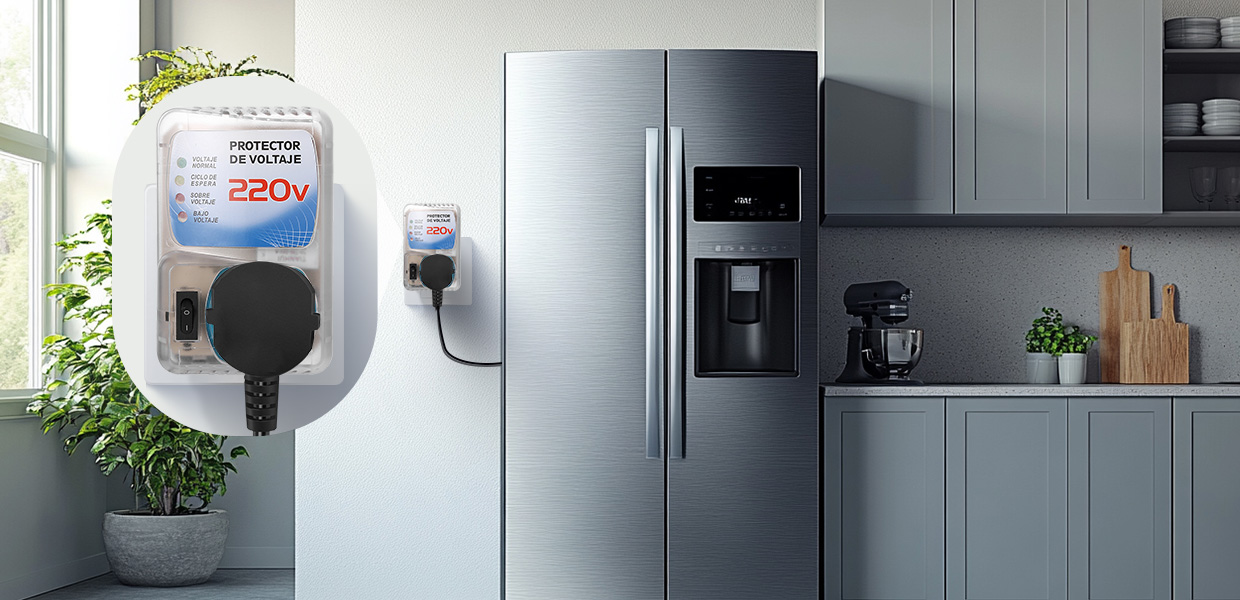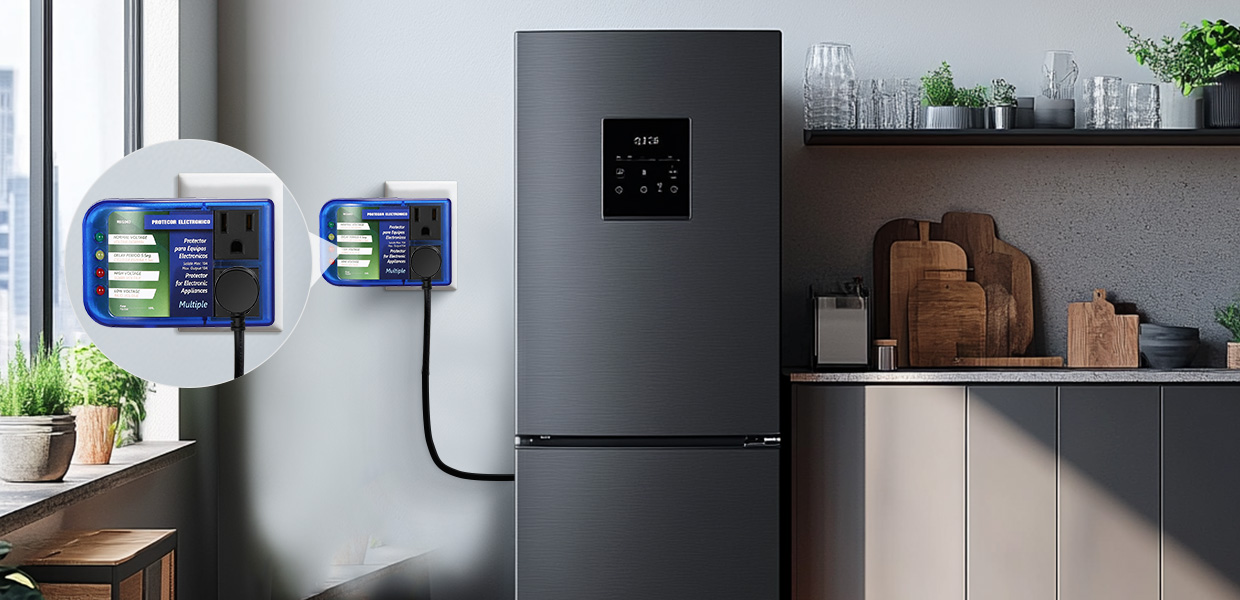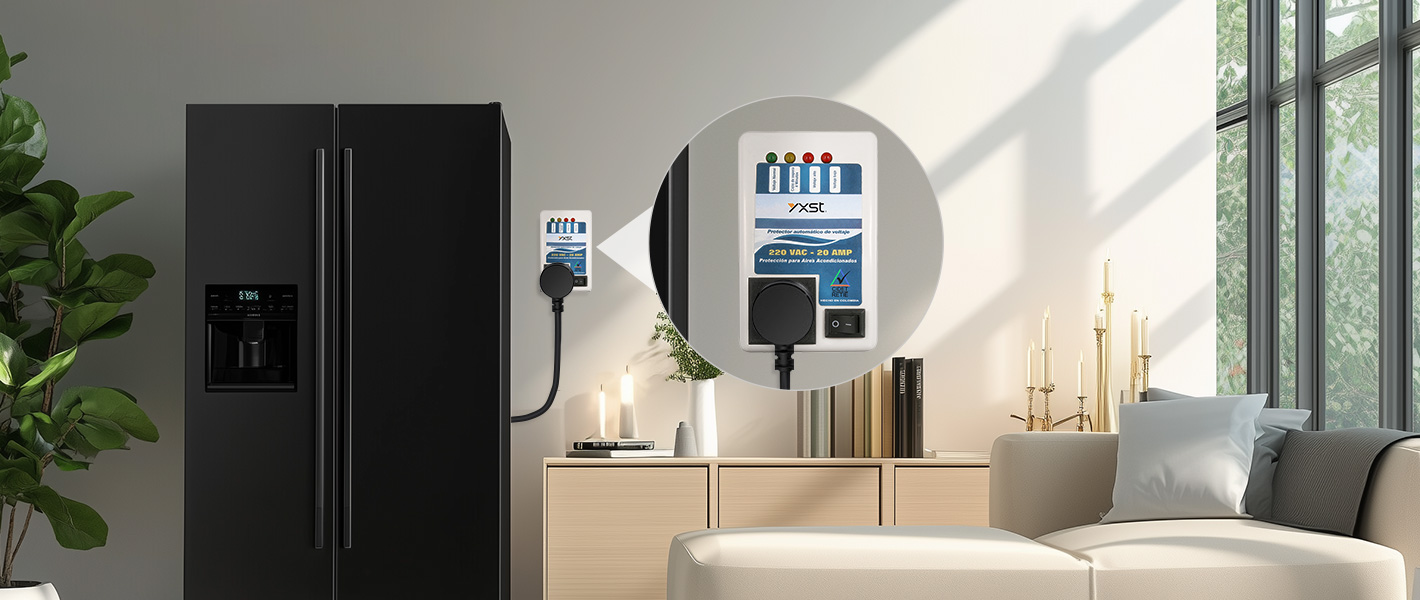How to choose best refrigerator surge protector for home
Date:2025-04-08 Click:566
When protecting your high-value appliances, a fridge surge protector isn’t just an optional accessory—it’s a necessity. Power surges, caused by lightning strikes, grid fluctuations, or even faulty wiring, can silently destroy your refrigerator, freezer, wine cooler, or other electronics. Imagine losing hundreds of dollars worth of food or a prized appliance because of an unexpected voltage spike. This guide details everything you need to know about the best fridge surge protectors, including critical features like joules rating, plug design, and installation instructions. Whether you need a mini protector for a compact space or a heavy-duty surge guard for multiple appliances, we’ve got you covered.
Why Your Fridge & Freezer Need a Surge Protector
Modern refrigerators and freezers are packed with sensitive electronics, from digital thermostats to ice makers. A single power surge can fry these components, leading to costly repairs or replacements. Here’s why investing in a surge protector for fridge units is non-negotiable: - Prevent Food Spoilage: A damaged fridge could shut down, ruining hundreds of dollars worth of groceries. - Avoid Expensive Repairs: Replacing a compressor or control board costs far more than a surge protector.How to Choose the Best Fridge Surge Protector (Key Features)
Not all surge protectors are created equal. Here’s what to prioritize when shopping for the best fridge surge protector:1. Joule Rating: The Higher, The Better
Joules measure a protector’s energy absorption capacity. For refrigerators and freezers, opt for a minimum of 300 joules—higher ratings (2,000+ joules) offer longer-lasting protection.2. Compact & Secure Plug Design
Mini surge protectors with low-profile plugs can be installed in outlets behind heavy appliances.
Step-by-Step Installation Instructions for Your Surge Protector
Installing fridge surge protector takes minutes. Follow these simple instructions to ensure safety: 1. Unplug the Fridge: Always turn off the appliance before installation. 2. Plug In the Surge Protector: Connect it directly to the wall outlet—avoid extension cords. 3. Reconnect the Fridge: Plug your appliance into the surge protector. 4. Test the System: Check for indicator lights confirming active protection.Can a Surge Protector Work for TVs & Other Electronics?
Absolutely! A high-quality surge guard isn’t limited to kitchen appliances. Use it to protect: - TVs and Sound Systems - Gaming Consoles - Home Office Equipment Just make sure the joule rating matches the needs of your device (4K TVs, for example, will need at least a higher joule).Common Mistakes to Avoid with Fridge Surge Protectors
Even the best fridge surge protector can fail if used incorrectly. Steer clear of these errors: - Daisy-Chaining Protectors: Plugging one surge protector into another can overload circuits. - Ignoring Replacement Alerts: If the protector’s indicator light turns off, replace it immediately. - Using Outdated Models: Older units may lack sufficient joules for modern appliances.
FAQs About Fridge Surge Protectors
Q: Can I use a power strip instead of a surge protector?
A: No! Power strips don’t block surges—they only add outlets.
Q: Will surge protectors increase electricity bills?
A: No. Surge protectors are activated only when a sudden increase in voltage is detected (such as lightning strikes or power grid fluctuations), and consume almost no power in daily standby mode.
But please note: If you use a "high-end protector" with filtering or voltage stabilization function, it may generate a small amount of energy consumption due to continuous voltage stabilization, but the impact is minimal (annual cost is usually less than 1 yuan).
Q: Do surge protectors need to be replaced regularly? How long can they be used?
A: Need to be replaced! The internal components will gradually age due to absorbing surges, and they will not be able to protect the equipment after failure.Life judgment:
Models with indicator lights: Replace immediately when the red light is on or off.
Models without indicator lights: It is recommended to replace it every 2-3 years, or actively replace it after a large lightning strike.
Tips: Record the installation date and set a mobile phone reminder to avoid forgetting.




